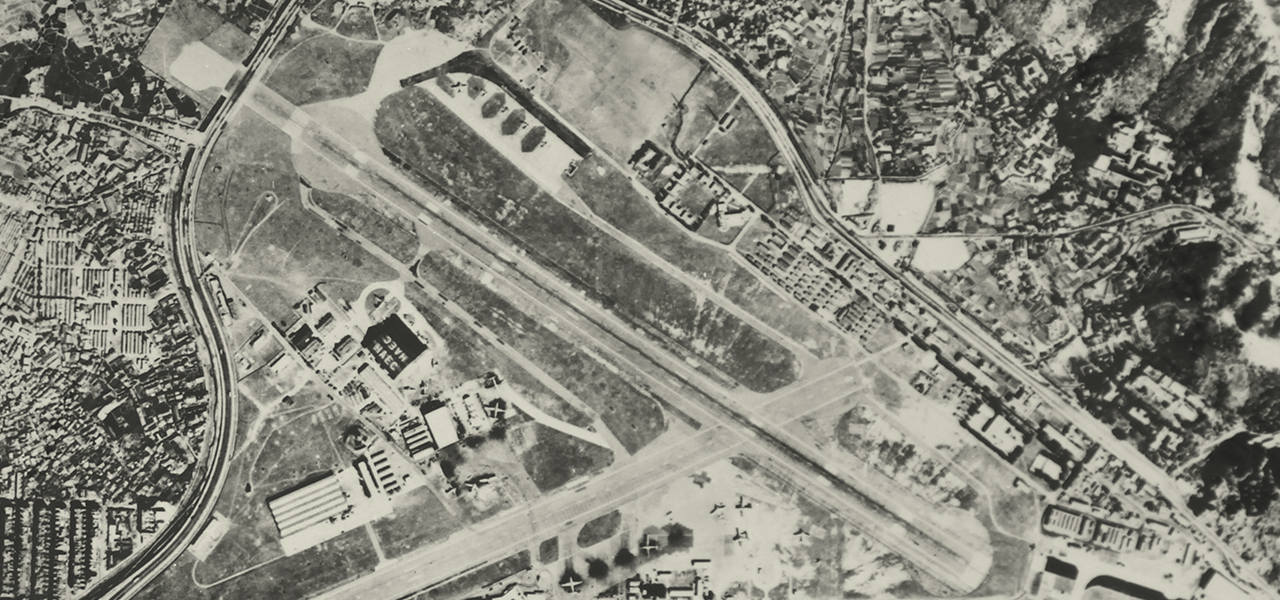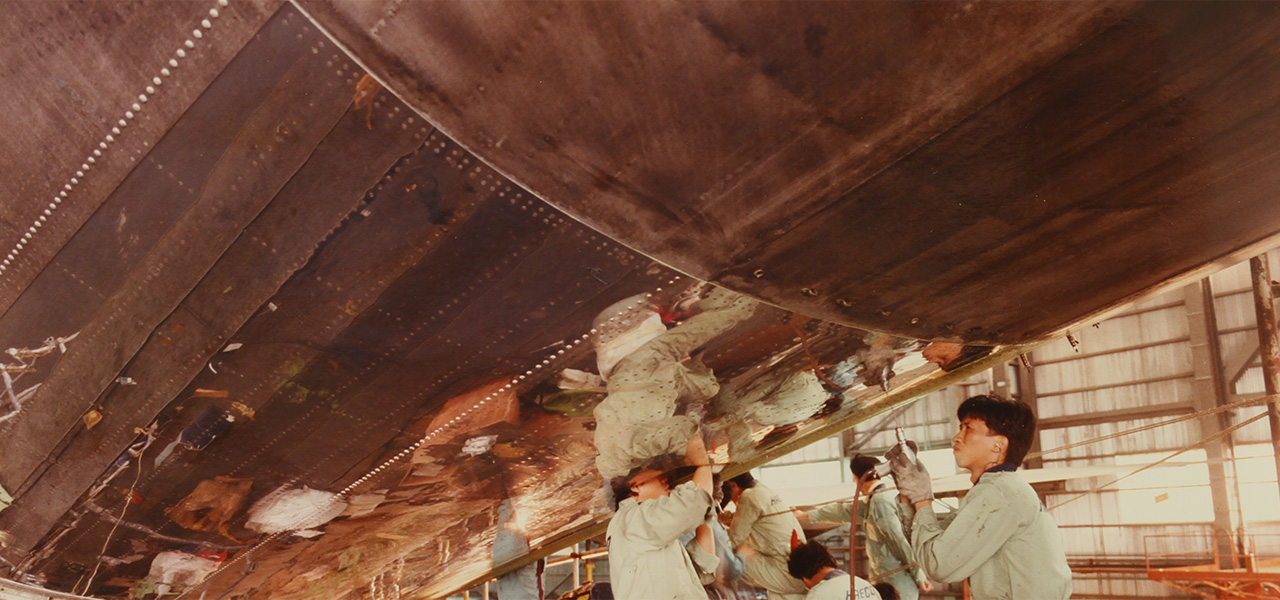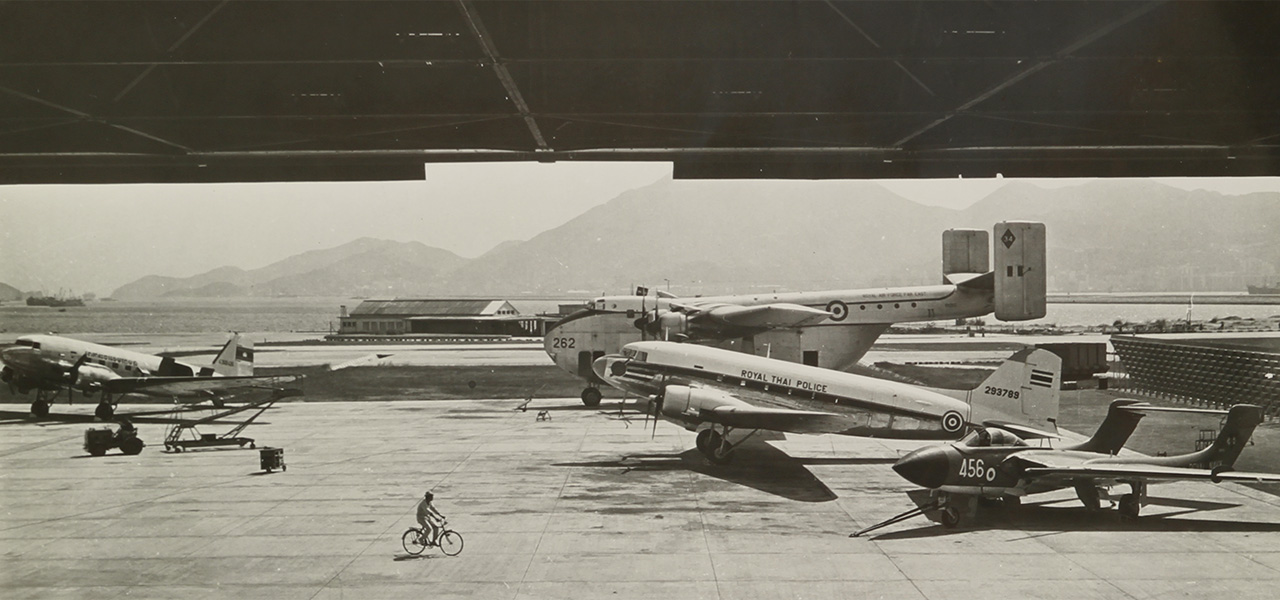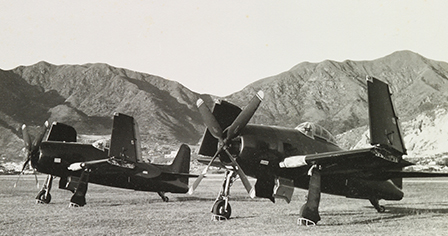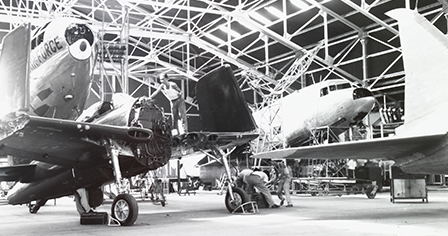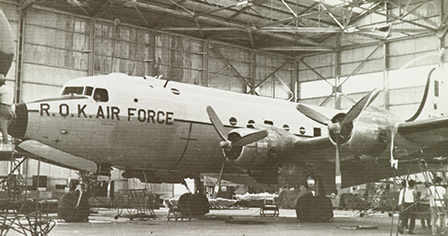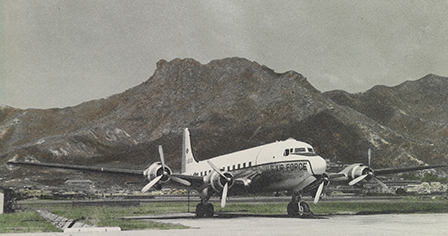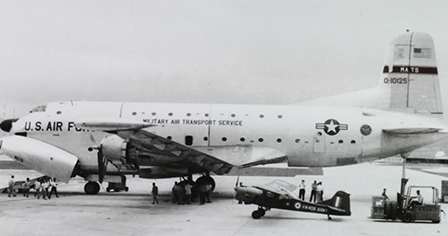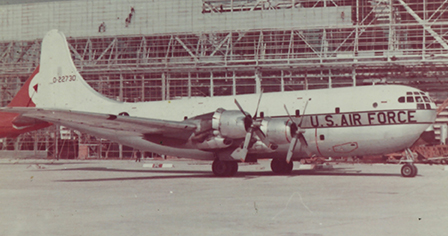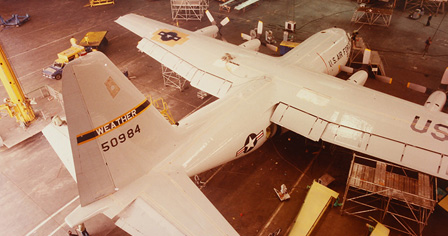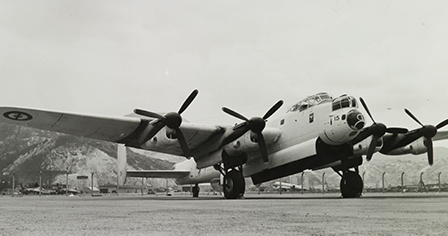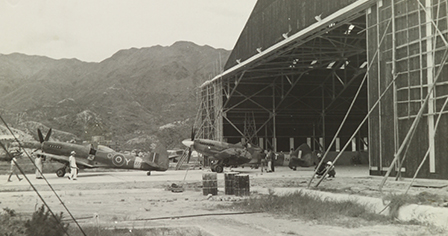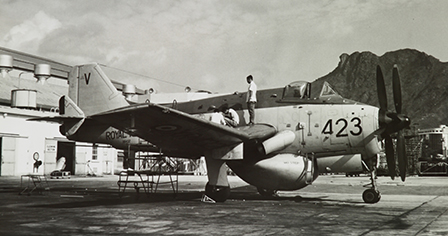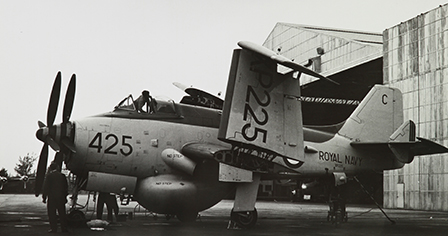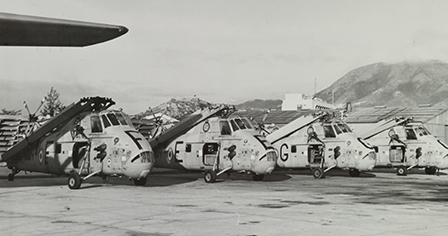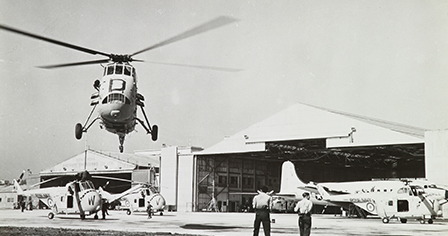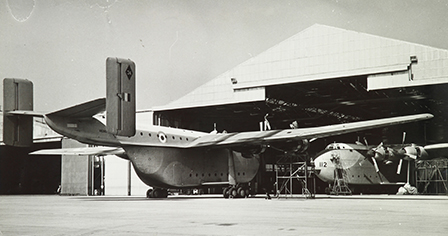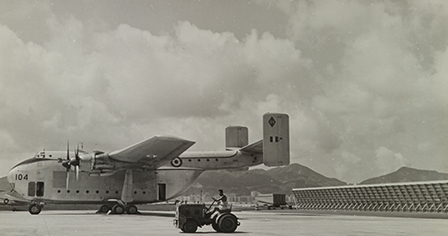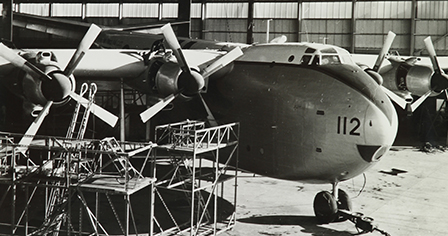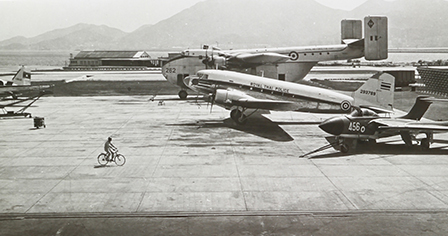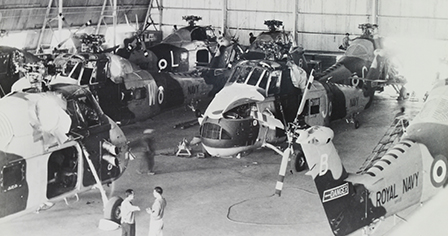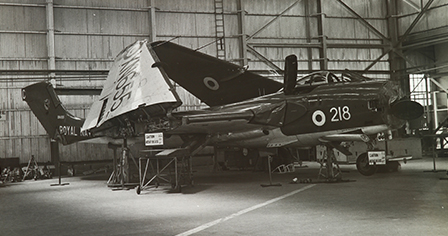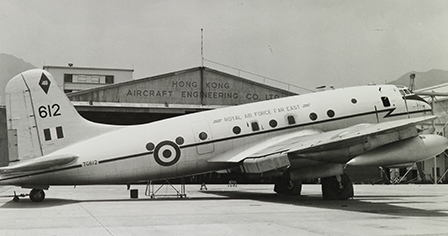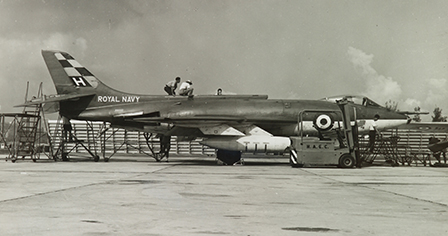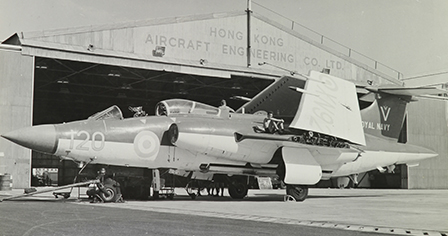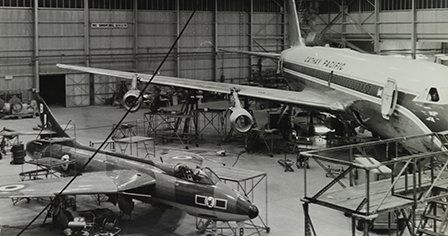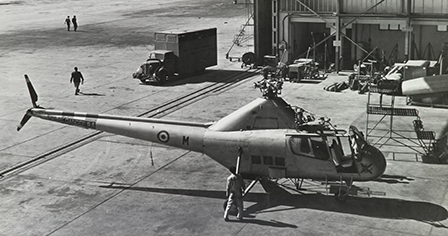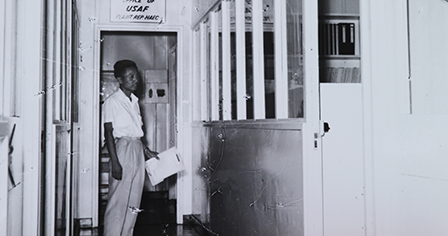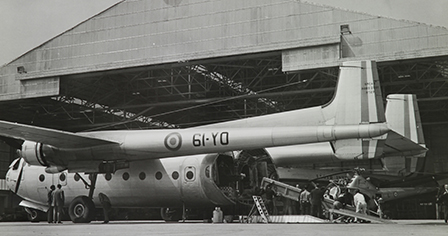
 Stories
Stories
-
14
Why I joined HAECO
-
15
The apprentices
-
16
MET flyer
-
17
CV240
-
18
Mistakes & even more mistakes
-
19
Up in the air
-
20
When boss calls
-
21
Craftsmanship rules
-
22
Package matters
-
23
Seaplanes maintenance
-
24
Reconfiguration
-
25
Fixing the gas tank
-
26
Tempting staff benefits
-
27
New business
-
28
747 inauguration
-
29
New is not enough
-
30
We rock the world
-
31
Lufthansa incident
18

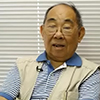
Au Sung Lai
Just take a guess. Among the many types of aircraft that we repaired in HAECO, which one made us most error-prone?

Bob
The Russian one?

Jenny
The French passenger plane?

Au Sung Lai
Actually, the U.S.military aircraft…
Mistakes often occurred for military aircraft maintenance in the 50s and 60s
The U.S.Air Force was used to pull out all classified equipment on the aircrafts before sending them in for our service. So we’d had this experience, that after the plane was delivered the Air Force filed a complaint about the firing chamber being stuffed with electrical wires. It was a B-25 bomber. In repairing I laid the wires in the empty space I saw. So we explained that the Air Force had never told us it was a firing chamber. There were other laughing stocks too, such as reversing the wires in installation and reversing the opening order of the magazine and the bomb hatch — so the bomb was released while the hatch was still closed. As we didn’t get enough information, we had to repair it with our own devise; even then we had no chance to test it, and we knew something went wrong only after the Air Force received and tested it.
A Bearcat fighter, a C-46 and a C-47 military transporter are under maintenance in the HAECO hangar. (1950s)
During the Korean war, the transport aircraft C-54 “Skymaster” of the Republic of Korea Air Force was a frequent visitor of HAECO.
C-118 transport aircraft of the U.S.military was common in the 50s and 60s. In the photo, it was parked at a space exclusive for engine testing.
C-97 “Stratofreighter” of the U.S.Air Force. At the back was the HAECO Hangar No.4 under construction.
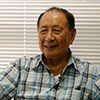
Cheng Tin Gai
We repaired military transport plane during the Korean War. At that time most of the U.S.military planes were sent to Hong Kong from Korea for maintenance. Before they arrived they had to unload the weapons. The RAF wouldn’t let us come close to them until the weapons were all removed.

Kelvin
Then, which part of the military aircraft was the most dangerous to repair?

Cheng Tin Gai
Haha! You can hardly guess it right…
The most dangerous task of military aircraft maintenance is…
The most dangerous part was the seat. It was ejection seat in the military aircraft. Some of them were operated mechanically, so they couldn’t be removed like those fired by explosive cartridge. But they would notice us beforehand. Normally the ejection seat was propelled out by explosive charge, and the seat was ejected once the button was pressed. If they thought it dangerous, they would give us warning or even send someone to supervise our work. So there were always four or five men of the U.S.Force stationed at our place.

Lee
I can never imagine there are explosives in the seat! Where are they found in other parts of the military aircraft?
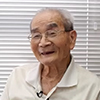
Lee Ping
Also in the steering wheel…
The most dangerous task of military aircraft maintenance is…
When repairing the British military planes, we had to disconnect the electric wires and the battery without striking any sparks. But we’d never handled it before and we’d no idea how to — we couldn’t find the battery, not even with reference to the manual. We had to call the expert in the British military. Then we knew there was a small hatch, with a key and a level, and the battery was concealed inside. There was also the backup battery on the other side of the airframe. The fact was, they didn’t call it “battery” but “accumulator”, and we’d never learnt about this. The fact was, they had backup battery at the nose of the plane, and we’d never seen it. After opening it I found that the management had left a paper there, written “explosives”, to remind us. At that moment I was the only person there, and I found that there were explosives in the seat and also in the steering wheel. The steering column was explosive-charged because, in case of ejection, the column had to move forward so that when the pilot was propelled upward it wouldn’t tug his leg. There were also explosives in every screw of the windscreen. After the steering column and the windscreen were blasted out, the pilot could escape with a press.
“Lancaster” bomber, the mainstay of the British RAF in the Second World War. It did not station at Hong Kong during the war, but in the 50s and 60s it became the regular of HAECO.
“Westland Wessex” helicopter force of the British Royal Navy sent to HAECO for service in the mid-70s.
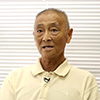
Lam Kwok Choi
So in the 60s the U.S.military had to set up an office station at HAECO to assist and supervise our service…
There used to be a US military mission at HAECO
The company allocated part of the office to the U.S.military, and we also assigned staffs to work for them. There was a foreman in the office. The company gave them helpers, and I was assigned there once. I did the documents inside the office. There was also a warehouse of the U.S.military at HAECO.
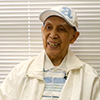
Lee Ming Chien
Apart from the U.S.military planes, it was tiresome to repair French planes as well!
Misunderstandings between HAECO staff and the French people due to language barrier
You know the French had a strong English accent, and their aviation language was quite different from the British one. It caused problems sometimes. For instance the steering was called “compass” for the French. We couldn’t comprehend them at the beginning.

